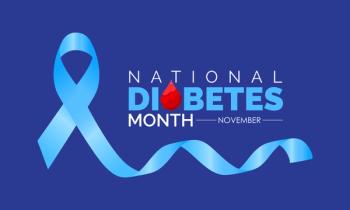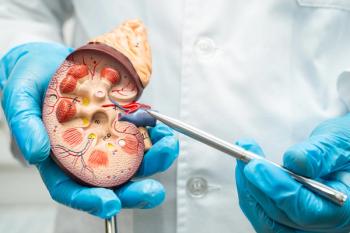
- March 2024
- Volume 90
- Issue 3
“Food Is Medicine” Movement Takes Off
Integrate nutrition into the health care system with a proactive approach to chronic disease management
Pharmacies have a great opportunity to get involved in the growing “food is medicine” (FIM) movement, which aims to bring nutrition into the health care system. As leaders in health and innovation and with unique access to patients, community pharmacies can take a leading role in this movement.
“I think it’s important to note that ‘food is medicine’ is most often understood to mean medically tailored meals,” Pharmacy Quality Alliance (PQA) Education Director Amanda Ryan, PharmD, BCGP, CPHQ, said in an interview with Pharmacy Times. “So that, of course, is a meal that is specific to an individual depending on their situation and their medical condition, and the role of pharmacists does continue to evolve.”
Nutrition has well-established links with overall health, including obesity, type 2 diabetes, hypertension, cardiovascular disease (CVD), and certain cancers. Approximately 50% of American adults are diagnosed with at least 1 nutrition-related chronic disease, for which lifestyle interventions such as diet and exercise are often at least as effective as pharmacological therapies.1 Significantly, higher consumption of fruits and vegetables is associated with better health, and study data have shown a 28% reduction in CVD risk and a 27% reduction in CVD mortality among individuals who eat more fruits and vegetables compared with those who eat fewer.1
Despite the known benefits of better nutrition, researchers have identified many barriers to obtaining adequate daily servings of fruits and vegetables. The American Heart Association and the 2015-2020 Dietary Guidelines for Americans both recommend 4 servings of fruit and 5 servings of vegetables per day, but just 12% of adults in the US meet the recommended daily fruit intake and just 9% meet the recommended intake for vegetables.1 Key barriers to meeting these goals include lack of financial and geographical access; lack of health literacy; lack of time, skills, or equipment for cooking; and lack of social support.1 The FIM movement aims to address all these barriers.
Interest in FIM has grown significantly in recent years, largely driven by a desire to address the high costs and increasing health issues related to poor nutrition. According to research data published in JAMA Health Forum, these nutrition related health issues cost the US economy $1.1 trillion annually and are a leading cause in mortality. Definitions of FIM can vary, but in general, it refers to food and nutrition programs that are tied to health care provision and designed to prevent or treat diet-related illnesses.2
Many health care and pharmacy organizations have also recognized the importance of nutrition in overall health. For instance, PQA recently released the third edition of its PQA Social Determinants of Health Resource Guide, which specifically addresses food security.3
“We do know that individuals who don’t have reliable access to food are more likely to encounter challenges related to not only medication access, but also the outcomes of medication therapy,” Ryan said.
The federal government has begun to take notice of the FIM movement, thanks to a growing body of evidence suggesting its aims are proving successful. Results from one 2019 study, published in JAMA Internal Medicine, found that the provision of medically tailored meals was associated with fewer admissions to hospitals and skilled nursing facilities, as well as lower overall medical spending. The program involved the home delivery of meals designed by registered dietitian nutritionists to meet the specific needs of the patient and is just one example of the form FIM programs can take.4
Reflecting the potential for such programs, the US Department of Health and Human Services (HHS) hosted the first-ever Food Is Medicine Summit on January 31, 2024. The 1-day event brought together stakeholders at the intersection of food and health, and HHS Secretary Xavier Becerra took the opportunity to announce 3 new public-private partnerships with Instacart, the Rockefeller Foundation, and Feeding America to support HHS’s nutrition goals.5
Community pharmacists are located within 5 miles of 88.9% of the US population, making them highly accessible health care providers.6 As such, they have a great opportunity to take the lead in many of these efforts. Representatives from the National Association of Chain Drug Stores (NACDS) attended the HHS Food Is Medicine Summit, and NACDS President and CEO Steven C. Anderson, FASAE, CAE, IOM, joined a collaborative panel called Integrating Food Is Medicine Into Cross-Sector Systems to Advance Health.7 According to a press release, Anderson highlighted the opportunities pharmacies have in FIM.7
“Pharmacies gave tens of thousands of COVID[-19] tests [to] the American people…and more than 300 million COVID[-19 vaccines] in a pharmacy setting. Estimates suggest we saved 1 million lives and that we saved the country $450 billion in health care costs,” Anderson said in the panel discussion. “This illustrates how we can scale what we are doing with ‘food is medicine’ through our member company stores.”7
NACDS has been working with the Milken Institute to explore how pharmacies can be involved in FIM, with a focus on pharmacy-based food prescription programs.6 Such programs, called food pharmacies, have been successful in some areas of the country.1 The goal of food pharmacy programs is to empower patients to take control of their own nutrition and holistic health by managing or even preventing CVD and other chronic diseases.1
In 2012, nonprofit organization Wholesome Wave began partnering with health care clinics to issue prescriptions that could be redeemed for produce at participating farmers’ markets. Each prescription was good for up to $1 per day per household member. Variations of this program have since grown in popularity, including onsite gardens that patients can help tend, free or reduced-cost produce boxes from local farms, and food pantries onsite at hospitals and clinics.1
Partnering with community organizations, grocery stores, and farmers’ markets is a key part of successful FIM programs. Researchers have found that the issuing of fruit and vegetable prescriptions by physicians, pharmacists, or other health care providers enhanced participants’ motivation to increase their consumption of nutritious foods. Some programs also include visits with a health care provider such as a nutritionist or a medical student.1
“[One thing] that we’ve seen pharmacies and pharmacists be able to accomplish over and over again is establishing some sort of methodology to screen for social need,” Ryan said. “That includes things like food and nutrition, [food] security, and healthy eating habits, and then being able to refer people to organizations, and that’s where that community-based partnership comes back again.”
References
Donohue JA, Severson T, Martin LP. The food pharmacy: theory, implementation, and opportunities. Am J Prev Cardiol. 2021;5:100145. doi:10.1016/j.ajpc.2020.100145
Bleich SN, Dupuis R, Seligman HK. Food is medicine movement - key actions inside and outside the government. JAMA Health Forum. 2023;4(8):e233149. doi:10.1001/jamahealthforum.2023.3149
PQA Social Determinants of Health Resource Guide. 3rd ed. Pharmacy Quality Alliance; 2024. Accessed February 14, 2024. https://www.pqaalliance.org/sdoh-resource-guide
Berkowitz SA, Terranova J, Randall L, Cranston K, Waters DB, Hsu J. Association between receipt of a medically tailored meal program and health care use. JAMA Intern Med. 2019;179(6):786-793.doi:10.1001/jamainternmed.2019.0198
HHS hosts first-ever ‘Food Is Medicine’ Summit, launches three public-private partnerships. News release. US Department of Health and Human Services. February 2, 2024. Accessed February 14, 2024. https://www.hhs.gov/about/news/2024/02/02/hhs-hosts-first-ever-foodmedicine-summit-launches-three-public-private-partnerships.html
Gallagher A. Study: 88.9% of US population lives within 5 miles of a community pharmacy. Pharmacy Times. August 4, 2022. Accessed February 14, 2024. https://www.pharmacytimes.com/view/study-88-9-of-us-population-lives-within-5-miles-of-a-community-pharmacy
NACDS engages in HHS’ inaugural Food Is Medicine Summit. National Association of Chain Drug Stores. February 1, 2024. Accessed February 14, 2024. https://www.nacds.org/news/nacdsengages-in-hhs-inaugural-food-is-medicine-summit/
Articles in this issue
over 1 year ago
Pharmacy Policy Updates, March 2024over 1 year ago
Pharmacist Spotlight: Natalie Young, PharmD, BCSCPover 1 year ago
Condition Watch: Dry Eye Reliefover 1 year ago
Fun Fact: What Are Sirtfoods, and Are They Good for You?over 1 year ago
Self-Care With VitaminsNewsletter
Stay informed on drug updates, treatment guidelines, and pharmacy practice trends—subscribe to Pharmacy Times for weekly clinical insights.


















































































































































































































